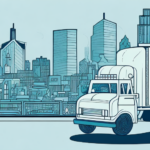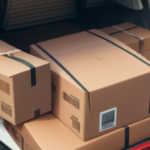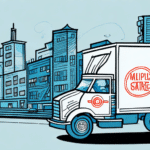What is Last Mile Delivery?
Last mile delivery refers to the final leg of the delivery process, where products are transported from a local distribution center directly to the customer’s doorstep. This stage is critical in ensuring customer satisfaction and plays a pivotal role in the overall efficiency of the supply chain.
One of the primary challenges in last mile delivery is navigating urban traffic congestion, which can lead to delays and missed delivery windows. To address this, many companies are adopting innovative delivery methods such as drones, electric bikes, and autonomous vehicles, which can maneuver through traffic more effectively.
Customer satisfaction is paramount in last mile delivery. Consumers expect their orders to arrive on time and in perfect condition. To meet these expectations, companies are investing in technologies like real-time tracking, automated delivery notifications, and enhancing their delivery personnel's training to provide exceptional service.
The Importance of Last Mile Delivery in E-Commerce
Last mile delivery is a crucial determinant of customer satisfaction in the e-commerce sector. Efficient last mile delivery can differentiate a business from its competitors, fostering customer loyalty and enhancing the company’s reputation.
However, the high costs associated with last mile delivery, including transportation, labor, and technology expenses, pose significant challenges, especially for small businesses. Optimizing delivery routes, leveraging advanced tracking systems, and partnering with third-party logistics providers can help mitigate these costs.
Sustainability is increasingly becoming a key focus in last mile delivery. Companies are adopting eco-friendly practices such as using electric vehicles, optimizing routes to minimize emissions, and utilizing sustainable packaging materials. These practices not only reduce the carbon footprint but also appeal to environmentally conscious consumers.
Top Last Mile Delivery Companies in 2023
Here is an updated list of the top ten last mile delivery companies in 2023:
- Amazon Logistics
- United Parcel Service (UPS)
- FedEx
- DHL eCommerce
- USPS
- Canada Post
- Royal Mail Group
- Aramex
- DPD Group
- China Post
These companies are recognized for their ability to provide fast, reliable, and cost-effective delivery services. For instance, Amazon Logistics has significantly expanded its delivery network, incorporating drones and autonomous robots to offer same-day and next-day delivery options.
For more detailed insights into each company's performance and offerings, refer to industry reports from sources like ShipScience.
How Technology is Transforming Last Mile Delivery
The last mile delivery landscape is being revolutionized by advancements in technology, including the use of drones, automated vehicles, and robotics. These technologies aim to make deliveries more cost-effective and efficient while enhancing the customer experience.
Real-time tracking and GPS integration enable customers to monitor their packages in real-time, providing transparency and reducing the likelihood of missed deliveries. Additionally, route optimization software helps companies minimize delivery times and reduce fuel consumption, contributing to both cost savings and environmental sustainability.
Automation in sorting and packaging is also streamlining operations, allowing for faster processing and dispatching of orders. These technological innovations are not only improving operational efficiency but also setting new standards for customer expectations.
For further reading on technological advancements in last mile delivery, visit the ShipScience Technology Trends page.
Challenges and Solutions in Last Mile Delivery
Last mile delivery companies face numerous challenges, including traffic congestion, high operational costs, and maintaining package security. To overcome these obstacles, companies are implementing several strategies:
- Route Optimization: Advanced algorithms and AI are being used to determine the most efficient delivery routes, reducing travel time and fuel consumption.
- Partnerships with Local Providers: Collaborating with local delivery services can enhance coverage and reduce delivery times in specific regions.
- Secure Delivery Options: Implementing secure lockers, requiring signature confirmations, and using tamper-evident packaging help mitigate the risk of theft and loss.
Additionally, addressing workforce shortages through automation and offering competitive compensation can help ensure that delivery companies maintain a reliable and skilled workforce.
For comprehensive strategies on overcoming last mile delivery challenges, explore the ShipScience Solutions section.
Future Trends in the Last Mile Delivery Industry
The last mile delivery sector is poised for significant growth and transformation, driven by evolving consumer expectations and technological innovations. Key future trends include:
- Electric and Autonomous Vehicles: The adoption of electric and self-driving delivery vehicles is expected to increase, contributing to sustainability and operational efficiency.
- Drone Delivery: Drones are becoming a viable option for delivering small packages quickly, particularly in urban areas with heavy traffic.
- Augmented Reality (AR) and Virtual Reality (VR): These technologies are being used for training delivery personnel and enhancing customer interactions.
- Smart Warehousing: Integration of IoT and AI in warehouses will streamline inventory management and order processing.
Staying abreast of these trends will enable delivery companies to remain competitive and meet the growing demands of the e-commerce industry.
Learn more about upcoming trends in last mile delivery at the ShipScience Future Trends page.
Best Practices for Managing Last Mile Deliveries
Effective management of last mile deliveries is essential for ensuring timely and satisfactory customer experiences. Here are some best practices:
- Accurate Delivery Estimates: Providing precise delivery windows helps manage customer expectations and reduces missed deliveries.
- Effective Communication: Keeping customers informed through automated notifications and responsive customer service enhances satisfaction.
- Delivery Route Optimization: Utilizing advanced software to plan efficient routes saves time and reduces operational costs.
- Performance Tracking: Monitoring key performance indicators (KPIs) such as on-time delivery rates and customer feedback helps identify areas for improvement.
By implementing these best practices, businesses can ensure a smooth and reliable last mile delivery process, ultimately leading to increased customer loyalty and repeat business.
Conclusion: Making the Right Choice for Your Business’ Last Mile Deliveries
Selecting the appropriate last mile delivery partner is vital for the success of e-commerce operations. Factors such as delivery speed, reliability, coverage area, and cost should be meticulously evaluated to ensure the best fit for your business needs.
Businesses should also consider the technological capabilities of delivery partners, including real-time tracking, route optimization, and sustainable practices, to enhance operational efficiency and meet evolving consumer demands.
As the last mile delivery landscape continues to evolve with new technologies and trends, staying informed and adaptable is essential for maintaining a competitive edge in the marketplace.
For more guidance on selecting the right last mile delivery partner, visit the ShipScience Selection Guide.






















